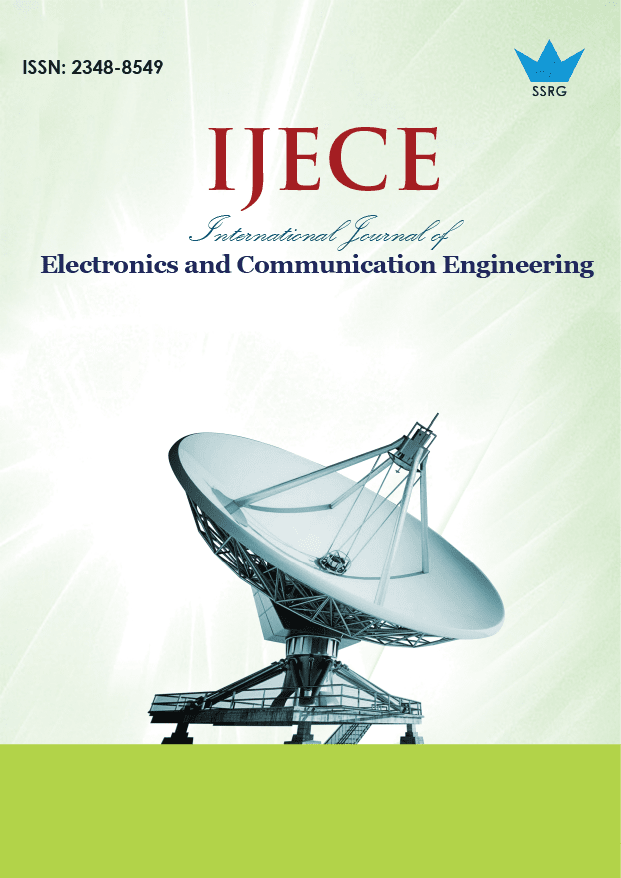Adaptive Ship Rescue Optimization Enabled Deep Learning for Sybil Attack Detection with Secure Transmission in Urban VANET

| International Journal of Electronics and Communication Engineering |
| © 2025 by SSRG - IJECE Journal |
| Volume 12 Issue 8 |
| Year of Publication : 2025 |
| Authors : Nitha C Velayudhan, Arun Pradeep, Mukesh Madanan |
How to Cite?
Nitha C Velayudhan, Arun Pradeep, Mukesh Madanan, "Adaptive Ship Rescue Optimization Enabled Deep Learning for Sybil Attack Detection with Secure Transmission in Urban VANET," SSRG International Journal of Electronics and Communication Engineering, vol. 12, no. 8, pp. 11-21, 2025. Crossref, https://doi.org/10.14445/23488549/IJECE-V12I8P102
Abstract:
Future Road transportation is primarily reliant on connected vehicles. Moreover, the Intelligent Transportation Systems support road users through the utilization of Vehicular Ad hoc Networks (VANETs). The rogue node, termed a sybil node, transmits bogus signals to interrupt the system, impacting its security. However, the detection of a Sybil attack is complicated due to the dynamic nature of nodes and stability issues. Adaptive Ship Rescue Optimization-based Deep Kronecker Network (ASRO_DKN)-based Sybil attack detection is proposed to solve such an issue. The VANET simulation is initially carried out, and the Fractional Glowworm Swarm Optimization for Traffic Aware Routing (FGWSO-TAR) is performed. The Sybil attack is detected at the Base Station (BS), where the input data packet is applied to feature extraction, and the attack is detected by the Deep Kronecker Network (DKN). The hyperparameters of the DKN are tuned using the ASRO. The Precision, recall, and F-measure metrics are utilized to validate the ASRO_DKN-based Sybil attack detection in VANET, and the optimum values of 90.84%, 90.48%, and 90.13% are achieved.
Keywords:
Vehicular Adhoc Networks, Sybil attack, Fractional Glowworm Swarm Optimization, Deep Kronecker Network, Ship Rescue Optimization.
References:
[1] S. Rakhi, and K.R. Shobha, “LCSS Based Sybil Attack Detection and Avoidance in Clustered Vehicular Networks,” IEEE Access, vol. 11, pp. 75179-75190, 2023.
[CrossRef] [Google Scholar] [Publisher Link]
[2] Zhaoyi Zhang et al., “Detection Method to Eliminate Sybil Attacks in Vehicular Ad-Hoc Networks,” Ad Hoc Networks, vol. 141, 2023.
[CrossRef] [Google Scholar] [Publisher Link]
[3] Sofia Azam et al., “Collaborative Learning Based Sybil Attack Detection in Vehicular AD-HOC Networks (VANETS),” Sensors, vol. 22, no. 18, pp. 1-17, 2022.
[CrossRef] [Google Scholar] [Publisher Link]
[4] Yaling Zhu et al., “Sybil Attacks Detection and Traceability Mechanism Based on Beacon Packets in Connected Automobile Vehicles,” Sensors, vol. 24, no. 7, pp. 1-26, 2024.
[CrossRef] [Google Scholar] [Publisher Link]
[5] Julia Silva Weber, Miguel Neves, and Tiago Ferreto, “VANET Simulators: An Updated Review,” Journal of the Brazilian Computer Society, vol. 27, pp. 1-31, 2021.
[CrossRef] [Google Scholar] [Publisher Link]
[6] Nabeel Akhtar, Sinem Coleri Ergen, and Oznur Ozkasap, “Vehicle Mobility and Communication Channel Models for Realistic and Efficient Highway VANET Simulation,” IEEE Transactions on Vehicular Technology, vol. 64, no. 1, pp. 248-262, 2014.
[CrossRef] [Google Scholar] [Publisher Link]
[7] Mushtak Y. Gadkari, and Nitin B. Sambre, “VANET: Routing Protocols, Security Issues and Simulation Tools,” IOSR Journal of Computer Engineering, vol. 3, no. 3, pp. 28-38, 2012.
[Google Scholar] [Publisher Link]
[8] Dhia Eddine Laouiti et al., “Sybil Attack Detection in VANETs using an AdaBoost Classifier,” 2022 International Wireless Communications and Mobile Computing, Dubrovnik, Croatia, pp. 217-222, 2022.
[CrossRef] [Google Scholar] [Publisher Link]
[9] Jin Wang et al., “ClusterRep: A Cluster-Based Reputation Framework for Balancing Privacy and Trust in Vehicular Participatory Sensing,” International Journal of Distributed Sensor Networks, vol. 14, no. 9, 2018.
[CrossRef] [Google Scholar] [Publisher Link]
[10] Yi-Ying Zhang et al., “A Self-Learning Detection Method of Sybil Attack Based on LSTM for Electric Vehicles,” Energies, vo. 13, no. 6, pp. 1-15, 2020.
[CrossRef] [Google Scholar] [Publisher Link]
[11] Deepak Rewadkar, and Dharmpal Doye, “FGWSO-TAR: Fractional Glowworm Swarm Optimization for Traffic Aware Routing in Urban VANET,” International Journal of Communication Systems, vol. 31, no, 1, 2018.
[CrossRef] [Google Scholar] [Publisher Link]
[12] Long Feng, and Guang Yang, “Deep Kronecker Network,” Arxiv Preprint, pp. 1-40, 2022.
[CrossRef] [Google Scholar] [Publisher Link]
[13] Shu-Chuan Chu et al., “Ship Rescue Optimization: A New Metaheuristic Algorithm for Solving Engineering Problems,” Journal of Internet Technology, vol. 25, no. 1, pp. 61-78, 2024.
[Google Scholar] [Publisher Link]
[14] KDD Cup 1999 Data, 1999. [Online]. Available: https://kdd.ics.uci.edu/databases/kddcup99/kddcup99.html
[15] Mahır Kaya, and Yasemın Çetın-Kaya, “A Novel Deep Learning Architecture Optimization for Multiclass Classification of Alzheimer’s Disease Level,” IEEE Access, vol. 12, pp. 46562-46581, 2024.
[CrossRef] [Google Scholar] [Publisher Link]
[16] Kusum Dalal, “Ensuring Secure Transmission in VANET: Optimal Clustering and Improved LSTM-Based Intrusion Detection,” International Journal of Communication Systems, vol. 38, no. 4, 2025.
[CrossRef] [Google Scholar] [Publisher Link]
[17] M. Ajin, and R.S. Shaji, “Enhancing Security in Vanets: Adaptive Bald Eagle Search Optimization Based Multi-Agent Deep Q Neural Network for Sybil Attack Detection,” Vehicular Communications, vol. 54, 2025.
[CrossRef] [Google Scholar] [Publisher Link]
[18] M.K. Kirubakaran et al., “Enhanced VANET Communication: Fractional Order Water Flow Optimization and Secure Communication via Spatial Bayesian Neural Network,” International Journal of Communication Systems, vol. 38, no. 12, 2025.
[CrossRef] [Google Scholar] [Publisher Link]
[19] Mohammed Aledhari et al., “Safeguarding Connected Autonomous Vehicle Communication: Protocols, Intra- and Inter-Vehicular Attacks and Defenses,” Computers & Security, vol. 151, 2025.
[CrossRef] [Google Scholar] [Publisher Link]
[20] C. Balakumar, and S. Vydehi, “Multi-Dimensional Trust Based Data Dissemination Mechanism (MDTD) for Ensuring Authentication by Eliminating Blackhole Attack in VANET,” Journal of Intelligent Systems and Internet of Things, vol. 16, no. 1, pp. 102-117, 2025.
[CrossRef] [Google Scholar] [Publisher Link]

 10.14445/23488549/IJECE-V12I8P102
10.14445/23488549/IJECE-V12I8P102